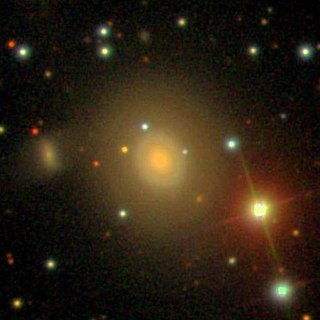
NGC 7053 is a spiral galaxy located about 200 million light-years away in the constellation of Pegasus. It was discovered by astronomer Albert Marth on September 2, 1863. It was then rediscovered by astronomer Heinrich d'Arrest on October 8, 1865.

NGC 7083 is an unbarred spiral galaxy located about 134 million light-years away in the constellation of Indus. It is also classified as a flocculent spiral galaxy. NGC 7083 was discovered by astronomer James Dunlop on August 28, 1826.
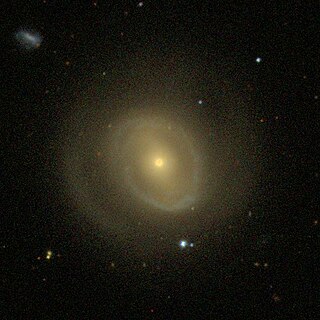
NGC 4454 is a barred spiral galaxy located about 123 million light-years away in the constellation of Virgo. NGC 4454 was discovered by astronomer William Herschel on April 17, 1784.

NGC 4753 is a lenticular galaxy located about 60 million light-years away in the constellation of Virgo. NGC 4753 was discovered by astronomer William Herschel on February 22, 1784. It is notable for having distinct dust lanes that surround its nucleus. It is a member of the NGC 4753 Group of galaxies, which is a member of the Virgo II Groups, a series of galaxies and galaxy clusters strung out from the southern edge of the Virgo Supercluster.
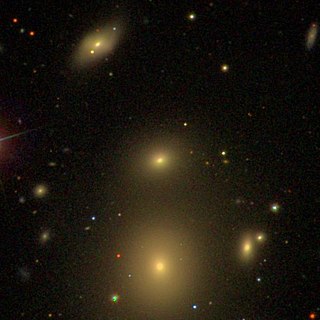
NGC 3841 is an elliptical or lenticular galaxy located about 300 million light-years away in the constellation Leo. It was discovered by astronomer John Herschel on March 25, 1827 is a member of the Leo Cluster.

NGC 3861 is a large barred spiral galaxy with a ring-like structure located about 310 million light-years away in the constellation Leo. It was discovered by astronomer John Herschel on March 23, 1827. NGC 3861 is a member of the Leo Cluster and has a normal amount of neutral hydrogen and ionised hydrogen.

NGC 3873 is an elliptical galaxy located about 300 million light-years away in the constellation Leo. The galaxy was discovered by astronomer Heinrich d'Arrest on May 8, 1864. NGC 3873 is a member of the Leo Cluster.
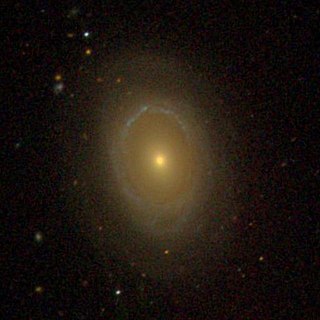
NGC 3884 is a spiral galaxy located about 330 million light-years away in the constellation Leo. The galaxy was discovered by astronomer William Herschel on April 27, 1785 and is a member of the Leo Cluster.

NGC 4090 is a spiral galaxy located 340 million light-years away in the constellation Coma Berenices. The galaxy was discovered by astronomer Heinrich d'Arrest on May 2, 1864 and is a member of the NGC 4065 Group.

NGC 3741 is an irregular galaxy in the constellation Ursa Major. It was discovered by John Herschel on March 19, 1828. At a distance of about 10 million light-years, it is located in the M94 Group. It is relatively undisturbed by other galaxies.
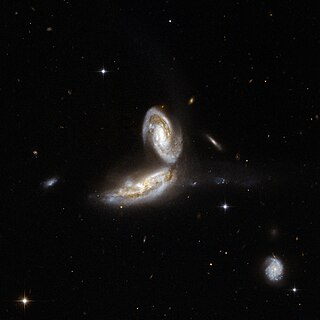
NGC 5331 is a pair of two interacting spiral galaxies in the constellation Virgo. They were discovered by William Herschel on May 13, 1793.
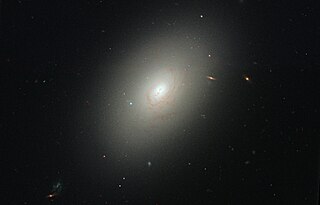
NGC 4150 is an elliptical galaxy located approximately 45 million light years away in the constellation Coma Berenices. It was discovered by William Herschel on March 13, 1785.

NGC 3666 is an unbarred spiral galaxy in the constellation Leo. It was discovered by William Herschel on March 15, 1784. It is a member of the Leo II Groups, a series of galaxies and galaxy clusters strung out from the right edge of the Virgo Supercluster.
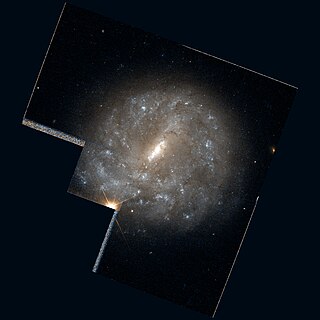
NGC 4900 is a barred spiral galaxy in the constellation Virgo. It was discovered by William Herschel on April 30, 1786. It is a member of the NGC 4753 Group of galaxies, which is a member of the Virgo II Groups, a series of galaxies and galaxy clusters strung out from the southern edge of the Virgo Supercluster.

NGC 3245 is a lenticular galaxy in the constellation Leo Minor. It was discovered by William Herschel on April 11, 1785. It is a member of the NGC 3254 Group of galaxies, which is a member of the Leo II Groups, a series of galaxies and galaxy clusters strung out from the right edge of the Virgo Supercluster.

NGC 4781 is a barred spiral galaxy in the constellation Virgo. It was discovered by William Herschel on Mar 25, 1786. It is a member of the NGC 4699 Group of galaxies, which is a member of the Virgo II Groups, a series of galaxies and galaxy clusters strung out from the southern edge of the Virgo Supercluster.

NGC 3898 is a spiral galaxy in the constellation Ursa Major. It was discovered by William Herschel on April 14, 1789.

NGC 3294 is a spiral galaxy in the constellation Leo Minor. It was discovered by William Herschel on Mar 17, 1787. It is a member of the Leo II Groups, a series of galaxies and galaxy clusters strung out from the right edge of the Virgo Supercluster. The galaxy is located at a distance of 98 million light years and is receding with a heliocentric radial velocity of 1,586 km/s. The morphological class of NGC 3294 is SA(rs)bc, which means this is a spiral galaxy with no central bar (SA), an incomplete inner ring structure (rs), and moderately wound spiral arms (bc).

NGC 918 is a barred spiral galaxy in the constellation Aries about 67 million light years from the Milky Way. It was discovered by John Herschel on Jan 11, 1831.

NGC 3710 is an elliptical galaxy in the constellation Leo. William Herschel discovered it on 10 April 1785.





















